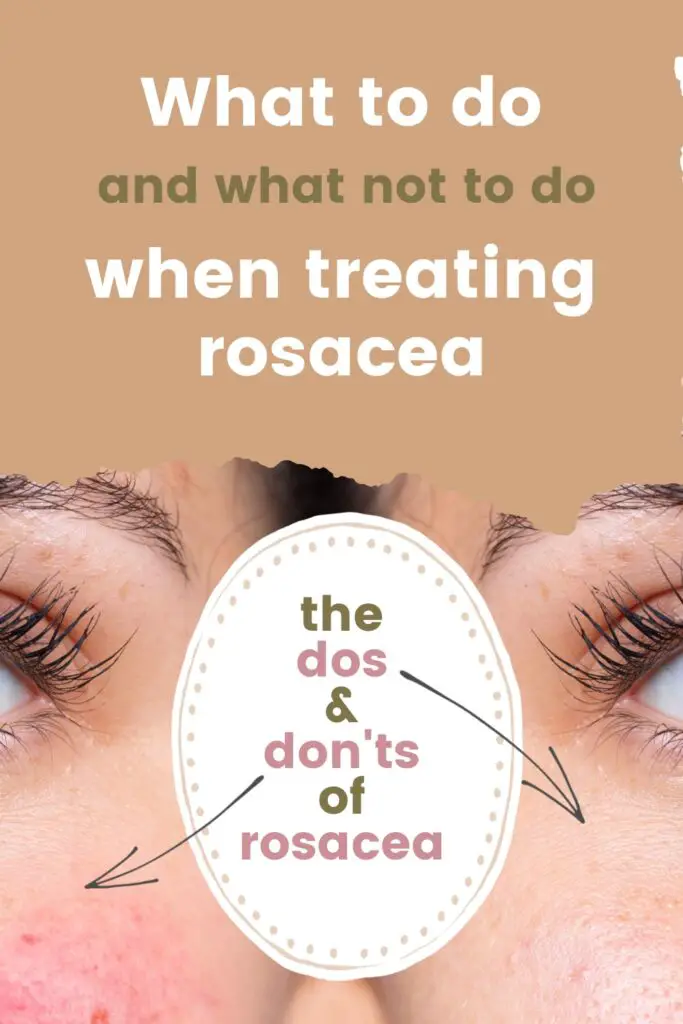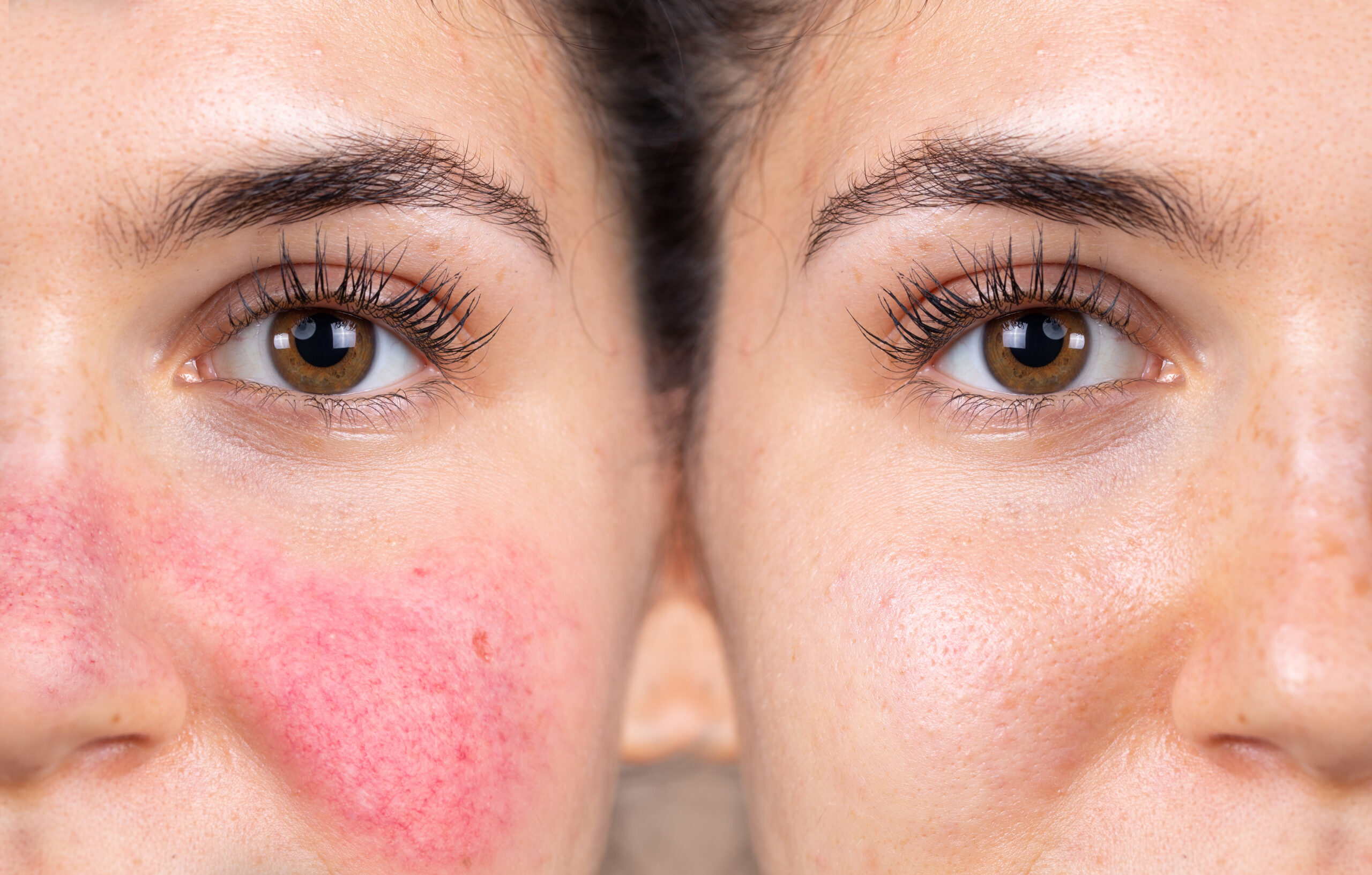Does your face flush and then break out like a teenager after a night of wine with your friends? Or maybe you are digging into your spicy Indian dinner and after your face feels like it is on fire. You may have rosacea my friend, and if so this post is for you. First of all, what is rosacea? Rosacea is a chronic inflammatory condition that can cause easy flushing and acne-like pimples. It is more common in adults. Cases can range anywhere from mild pink cheeks to a severely inflamed face that can even lead to disfigurement. I will first touch on what you can do to help avoid flares, and then I will discuss some common options for treating rosacea used in dermatology.
Rosacea triggers to avoid
The first thing I counsel all of my rosacea patients on is to avoid their triggers. Everyone with rosacea has different triggers that can cause their condition to flare. Some of the most common triggers are sun, stress, alcohol, spicy foods, and high intakes of caffeine or sugar. If you don’t know what your trigger is then I recommend starting a journal. When your face flares, write down everything you consumed in the past 24-48 hours including beverages. Also, what were you doing leading up to the flare? Were you outside for an extended period or maybe you were on a boat, under shade but the wind was continuously whipping at your face? After you have journaled for a few months take a look and see if you can find any patterns. Avoiding triggers is sometimes difficult such as avoiding the sun, but other times it’s as simple as lowering your intake of a certain food or drink.
Treating rosacea
Treating redness and flushing
If you have rosacea then you have sensitive skin. The first thing you should be doing is using a gentle cleanser and moisturizer with SPF. I like Sulfo Lo soap which is a sulfur-based soap and gentle on the skin. For moisturizers with sunscreen try, Elta MD UV Clear. They have a tinted or a non-tinted version.
Next, if you are experiencing the redness component of rosacea, then you can either use green-tinted makeup to cover it up or use a prescription topical such as brimonidine (Mirvaso) or oxymetazoline (Rhofade). Be careful if your provider ever prescribes Mirvaso or Rhofade. They can be extremely helpful for some but they can, at times worsen rosacea or cause something called rebound redness. This is when you stop the medication and the redness worsens.
You can also invest in laser treatments to target the blood vessels under the skin. Laser treatment is the only definitive treatment for the redness component of rosacea. It can be pricey and time-consuming but worth it for many.
Over-the-counter treatment for acne rosacea
What about the pimples? Glad you asked. The acne component of rosacea is in my opinion slightly easier to treat. There are many great topicals out there that can help. Keep in mind, that most of these are prescription-strength and will require an appointment with a medical provider.
There is a topical medication you can purchase over the counter without a prescription and that is Ivermectin. Ivermectin, believe it or not, you can find at tractor supply stores. It is an anti-parasite and they give it to horses when they have worms and it is apple-flavored! I kid you not, you can take that paste and rub a small amount on your face one to two times a day. The best part is it is inexpensive! The branded prescription version of Ivermectin is called Soolantra.
Prescription treatment options for acne rosacea
Other prescription-strength medications commonly used for treating rosacea are oral and topical antibiotics. Tetracyclines are a class of oral antibiotics that can reduce the inflammatory component of rosacea. Add on a topical such as metronidazole or azelaic acid and you are in business. Occasionally a few different topical and oral combinations need to be tried before you find the one that works best for you. This is called the art of medicine!
Have you been dealing with rosacea for a while? If so, what rosacea treatments have you found that work best for you? Let us know in the comments below!
*Disclaimer: Opinions expressed are solely my own and do not express the views or opinions of my employer. Information on this website is for education and entertainment purposes only. Content is my opinion. It is not substituted for your own doctor’s medical care or advice. One should not make any health or medical-related decisions based in whole or in part on any content on this site. Content is not intended to replace the services of a licensed, trained health professional. Content may not apply to you as an individual. Although I will update my website with current information, this website is not a definitive guide to dermatology.



View comments
+ Leave a comment